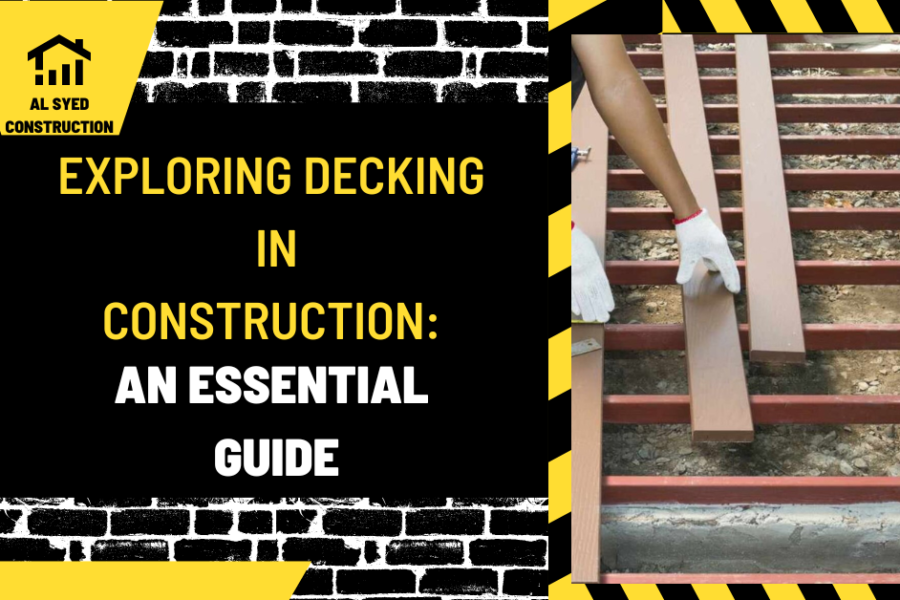Exploring Decking in Construction: An Essential Guide
Table of Contents
Introduction
Decking is a term that frequently surfaces in the realm of construction and outdoor design. This article delves into the concept of decking in construction, its types, materials used, and the considerations to keep in mind when planning a decking project.
What is Decking in Construction?
Definition
Decking refers to the process of installing a flat surface, typically outdoors, that is capable of supporting weight, similar to a floor. It is commonly used to create outdoor living spaces, such as decks, patios, and balconies.
Purpose of Decking
The primary purposes of decking in construction include:
- Enhancing Outdoor Living: Decking provides a comfortable and attractive outdoor space for relaxation, dining, and entertainment.
- Improving Aesthetics: It adds visual appeal to the exterior of a property, complementing its overall design.
- Increasing Property Value: A well-designed and constructed deck can boost the value of a property.
Types of Decking
Decking can be categorized based on the materials used and the design:
Materials Used
- Wood Decking: Traditional decking material known for its natural beauty and warmth. Common wood types include cedar, redwood, and pressure-treated pine.
- Composite Decking: Made from a mixture of wood fibers and plastic, composite decking is durable, low-maintenance, and resistant to rot and insects.
- PVC Decking: Pure plastic decking that is lightweight, resistant to moisture, and requires minimal maintenance.
- Aluminum Decking: A non-combustible and weather-resistant option that is ideal for fire-prone areas.
Design Variations
- Ground-Level Deck: Built directly on the ground, suitable for flat terrains.
- Raised Deck: Elevated above the ground, often used in sloped areas or to provide a better view.
- Multi-Level Deck: Consists of multiple decks connected by stairs or pathways, ideal for large outdoor spaces.
Considerations for Decking in Construction
When planning a decking project, consider the following:
- Purpose and Usage: Determine how the deck will be used to ensure it meets your needs.
- Material Selection: Choose a material that suits the climate, maintenance preferences, and budget.
- Design and Layout: Plan the size, shape, and features of the deck, such as railings, steps, and lighting.
- Building Codes and Permits: Check local regulations and obtain necessary permits before construction.
- Professional Installation: Consider hiring a professional contractor for complex designs or materials that require specialized installation.
Conclusion
Decking is a versatile and valuable addition to any construction project, offering both functional and aesthetic benefits. By understanding the different types of decking, materials, and key considerations, homeowners and builders can create outdoor spaces that enhance the enjoyment and value of a property.
FAQs
- How long does wood decking last?
- With proper maintenance, wood decking can last between 10 to 30 years, depending on the type of wood and environmental conditions.
- Is composite decking worth the investment?
- Composite decking is often more expensive upfront than wood, but its durability and low maintenance requirements can make it a cost-effective choice in the long run.
- Can decking be installed on uneven ground?
- Yes, decking can be installed on uneven ground using a raised or multi-level design to accommodate the terrain.
- How often should decking be maintained?
- Maintenance frequency depends on the material. Wood decking requires annual cleaning and staining or sealing, while composite and PVC decking need less frequent cleaning and no sealing.
- Are there eco-friendly decking options?
- Yes, options like composite decking made from recycled materials and sustainably sourced wood are eco-friendly choices for decking.




